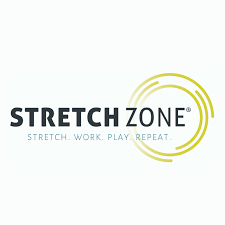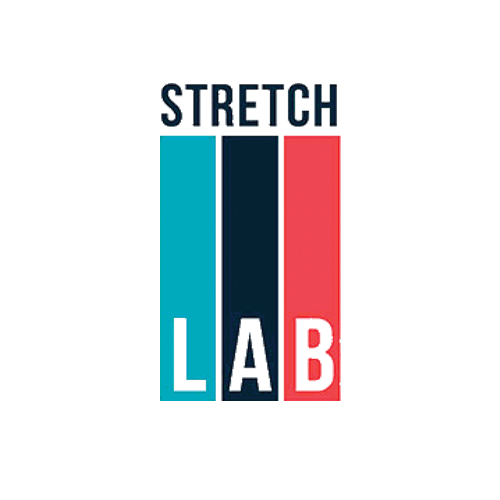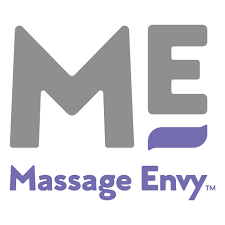Stretch Zone Franchise in 2025: Costs, Fee & FDD
Discover why Stretch Zone could be a choice in the growing wellness industry. Learn about its unique business model, market potential, and franchise support system to determine if it’s the right investment for you.

Table of Contents:
Stretch Zone is a specialized franchise that focuses on assisted stretching, offering a unique service that blends fitness, wellness, and therapeutic benefits. It was founded by Jorden Gold, who developed the concept to help improve flexibility and mobility through practitioner-assisted stretching. Stretch Zone’s significance in the fitness and wellness industry lies in its ability to cater to a wide range of individuals, from athletes to those simply looking to enhance their mobility and reduce stiffness. The stretch zone franchise profit potential is significant, thanks to its innovative approach and growing demand.
The core service of Stretch Zone revolves around practitioner-assisted stretching, where trained staff use a proprietary stretching method to help clients improve flexibility, alleviate pain, and enhance overall body function. This method is supported by a patented strapping system that ensures clients achieve maximum benefits from each session. Stretch Zone’s main customers include people looking for pain relief, athletes seeking performance enhancement, and everyday individuals wanting to improve their physical well-being. In addition to its core services, Stretch Zone also provides ancillary products like stretching aids and home equipment to maintain flexibility between sessions.
Stretch Zone has grown impressively in recent years, with over 150 locations across the United States. This growth reflects the increasing demand for wellness services that address flexibility and mobility. The franchise serves thousands of clients daily, emphasizing its success in carving out a niche in the broader fitness and wellness industry. While it currently operates solely in the U.S., the brand continues to expand domestically, positioning itself for future international growth. The stretch zone franchise opportunity is attractive for those interested in joining a community stretch zone that emphasizes health and wellness.
As a franchise, Stretch Zone offers robust support for its franchisees. New franchisees benefit from comprehensive training programs that cover everything from operational procedures to the Stretch Zone method itself. The franchise also provides ongoing support in marketing, staffing, and customer acquisition, making it a strong option for anyone looking to enter the wellness industry.
Stretch Zone Franchise Insights
- Stretch Zone has achieved a remarkable year-over-year unit growth rate of 38%, significantly outpacing the broader fitness and wellness industry’s average of just 5%.
- With over 150 locations across the U.S., the brand serves thousands of customers daily, tapping into the booming demand for wellness services focused on flexibility and mobility.
- The franchise requires relatively low startup costs compared to other wellness and fitness businesses, making it an attractive option for new entrepreneurs in the industry.
- Stretch Zone’s unique offering attracts a diverse customer base, including athletes, older adults, and everyday individuals seeking pain relief or enhanced physical performance.
Stretch Zone Franchise Key indicators
Growth YOY (%)
38%
vs industry 5%
Total U.S. Franchised Units
330
3-Year Failure Rate
0%
vs industry 10%
Sales-to-Investment ratio
2.1:1
How much does it cost to open a Stretch Zone franchise?
Understanding the potential investment size and capital requirements is crucial when considering opening a Stretch Zone franchise. These financial commitments, including initial franchise fees, equipment costs, and ongoing operational expenses, impact the feasibility and profitability of the venture. Thoroughly evaluating these factors ensures that potential franchisees are prepared for the financial responsibilities and can make informed decisions about their ability to sustain and grow the business, ultimately contributing to long-term success.
Min & Max Investment
Opening a Stretch Zone franchise involves several key costs, which are outlined in Item 7 of the Franchise Disclosure Document (FDD). You can see a breakdown of the costs to open a Stretch Zone below from the most recent Item 7 below:
| Type of Expenditure | Minimum Investment | Maximum Investment |
|---|---|---|
| Initial Franchise Fee | $59,500 | $59,500 |
| Prepaid Rent and Security Deposit | $750 | $15,000 |
| Leasehold Improvements | $3,000 | $35,000 |
| Architect's and Engineer's Fees | $0 | $3,500 |
| Furniture, Fixtures, and Furnishings | $5,475 | $14,000 |
| Computer System | $1,850 | $2,699 |
| Outdoor Signage | $1,000 | $10,000 |
| Indoor Signage and Graphics | $5,500 | $8,750 |
| Utility Deposits | $200 | $800 |
| Office and Store Supplies | $1,055 | $2,000 |
| Stretching Tables and Accessories | $23,400 | $37,400 |
| Insurance | $1,750 | $2,500 |
| Licenses and Permits | $200 | $3,000 |
| Attorney's Fees | $1,000 | $3,000 |
| Accountant's Fee | $200 | $2,500 |
| Travel, Lodging, Meals for Training | $2,500 | $5,000 |
| Initial Advertising Contribution to Media Fund | $500 | $500 |
| Grand Opening Fee | $14,950 | $14,950 |
| Additional Funds (3 months) | $10,000 | $20,000 |
| Total | $133,830 | $241,099 |
Item 7 in the Franchise Disclosure Document (FDD) is the “Estimated Initial Investment” section. It outlines the total costs a franchisee can expect to incur when starting a franchise, including the initial franchise fee, equipment, inventory, real estate, and other startup expenses. This section is crucial because it provides potential franchisees with a detailed understanding of the financial commitment required, helping them assess affordability and plan their investment strategy effectively.
Required Capital
To open a Stretch Zone franchise, the required capital involves both the initial investment costs and a net worth requirement set by Stretch Zone. Let’s take a closer look below:
- Initial Investment The total estimated initial investment ranges from $134,000 to $241,000. This includes the franchise fee, leasing expenses, equipment, and startup costs to get your location up and running. It’s essential to account for these expenses, as well as any additional funds needed for initial operations. Assuming that you will finance your franchise investment, you should plan to have 20% of the total investment amount in the form of equity (cash) for the investment.
- Liquid Assets Requirement Stretch Zone typically requires franchisees to have at least $100,000 in liquid assets. This ensures that the franchisee has sufficient funds to cover startup expenses, maintain operations, and handle unforeseen costs during the initial phase of the business.
- Net Worth Requirement While exact figures can vary, Stretch Zone usually recommends that franchisees have a net worth of at least $300,000. This includes the value of real estate, investments, and other personal property, minus any liabilities, ensuring the financial capacity to sustain the business long term.
These estimates are typical for the fitness and wellness industry, but for precise numbers, contacting Stretch Zone directly would provide the most accurate details.
How much does a Stretch Zone franchise owner make?
Calculating the salary of a Stretch Zone franchise owner involves analyzing gross sales to determine total revenue, assessing operational efficiency to understand profit margins, and accounting for franchisor fees and additional expenses such as rent, utilities, and payroll. Effective management of these factors can significantly impact the profitability and financial success of a Stretch Zone franchise owner. This comprehensive financial analysis helps estimate net profits, from which the owner’s salary can be derived. A clear understanding of these factors ensures accurate salary projections and financial planning for sustainable business operations.
Stretch Zone Revenue & Gross Sales
Based on the most recent analysis, Stretch Zone franchises achieved a median gross sales of $386,966, highlighting the growing demand for wellness services and the brand’s solid market presence. This performance underscores the potential for significant revenue generation within the assisted stretching niche, offering franchisees a promising opportunity for financial success.
Which key factors impact the average revenue performance of Stretch Zone franchisees?
The strong performance of Stretch Zone’s U.S. franchisee median gross sales this past year can likely be attributed to several key factors. First, the growing awareness and demand for wellness services, particularly those focused on mobility and pain relief, have positioned Stretch Zone as a go-to brand for a diverse customer base. The post-pandemic focus on health and preventive care has also contributed to the rise in customer demand. Additionally, Stretch Zone’s proprietary stretching method and its appeal to both athletes and the general population have expanded its reach. Effective franchise support, marketing, and training have helped franchisees optimize their operations and attract a steady stream of clients, contributing to increased sales compared to the previous year.
Stretch Zone Franchise Operational Costs
Operational costs for a Stretch Zone franchise are the ongoing expenses required to manage the day-to-day operations of the business. These costs are critical to maintaining the business’s functionality and delivering its services effectively. For a Stretch Zone franchise, operational costs include:
- Labor Costs Wages, salaries, and benefits for the practitioners who provide the stretching services, as well as other staff members such as receptionists or managers.
- Rent or Lease Payments The cost of leasing the location where the studio operates. This includes monthly rent payments, property insurance, and any relevant property taxes.
- Utilities Expenses for electricity, water, heating, and internet required to run the location and create a comfortable environment for clients.
- Equipment Maintenance and Replacement Regular maintenance and any necessary repairs for the stretching equipment used in the sessions, as well as eventual replacement costs for worn-out equipment.
- Marketing and Local Advertising Costs for promoting the business locally to attract new customers, including digital marketing, print ads, or local sponsorships.
- Supplies Expenses for purchasing stretching aids, cleaning products, office supplies, and any other items required to keep the studio running smoothly.
Careful planning for these operational costs is key to ensuring the long-term success of your Stretch Zone franchise.
Stretch Zone Franchise Fees
When opening a Stretch Zone franchise, it’s crucial to understand the ongoing fees associated with maintaining the business. These fees are necessary for operational support and the use of the brand. Below are the key ongoing fees for a Stretch Zone franchise:
- Royalty Fee The royalty fee is 6% of gross revenues, increasing to 7% over time. However, you must pay a minimum monthly royalty fee of $900, beginning in the first full calendar month of operations.
- There might be additional fees It’s important to review the franchise agreement carefully, as there may be other fees, such as technology, marketing, or renewal fees.
These fees are a critical part of your ongoing financial obligations and should be included in your long-term budgeting strategy for the franchise.
Stretch Zone Franchise Earnings
For Stretch Zone franchise owners, earnings potential is closely tied to factors like location, operational efficiency, and the owner’s level of involvement. Based on the median gross sales of $386,966, a well-run location can generate a steady stream of revenue, particularly when combined with effective local marketing and customer retention strategies. This figure reflects the franchise’s strong demand in the wellness and fitness industry, appealing to a wide range of clients seeking mobility and pain relief services.
For owner-operators, the average annual earnings are estimated at $69,654, which reflects the hands-on nature of managing the day-to-day operations. By actively overseeing staffing, customer engagement, and operational efficiencies, owner-operators can potentially maximize profits while maintaining tight control over expenses. As with any business, the key to improving earnings is optimizing operations and growing the customer base through personalized services and local outreach efforts.
How to Open a Stretch Zone Franchise
Becoming a Stretch Zone franchisee involves a multi-step process that ensures you’re fully prepared to run your location successfully. Below are the typical steps involved, from your initial inquiry to opening your franchise:
- Initial Inquiry You or your franchise specialist submits an initial inquiry basic information about your interest and background. You should also conduct thorough research on the franchise, including seeing all of the information available on the Vetted Biz franchise intelligence platform, including access to the most recent Franchise Disclosure Document (FDD).
- Initial Interview and Application After your inquiry, you’ll have a discussion with a franchise representative to further assess your interest and suitability. If both parties agree to move forward, you’ll complete a formal franchise application that includes your financial information.
- Discovery Day After reviewing the FDD, you’re invited to a Discovery Day, where you visit a Stretch Zone location, meet the corporate team, and get an in-depth look at the business model and operations. This is a critical step in making your final decision.
- Signing the Franchise Agreement If Discovery Day goes well, and you decide to proceed, you’ll sign the franchise agreement. This formalizes your commitment to become a Stretch Zone franchisee.
- Securing Financing and Location After signing, you’ll work on securing financing if necessary and begin the process of finding an appropriate location. Stretch Zone provides support in selecting and negotiating the lease for your franchise site.
- Training and Onboarding Before opening your location, you’ll undergo comprehensive training that covers all aspects of running the business, from Stretch Zone’s proprietary stretching method to operational procedures, customer service, and marketing.
- Grand Opening and Ongoing Support Once your location is set up, and you’ve completed training, you’ll prepare for your grand opening. Stretch Zone offers ongoing support in marketing and operations to ensure a successful launch and sustained growth.
Pros & Cons
Pros
Growing Wellness Market: The demand for wellness services, particularly those focused on mobility and pain relief, is rapidly increasing, giving Stretch Zone a strong market advantage.
Proprietary System: Stretch Zone’s unique stretching method sets it apart from competitors, providing a clear differentiator and fostering customer loyalty.
Relatively Low Startup Costs: Compared to other wellness and fitness franchises, Stretch Zone offers a more affordable initial investment, which can make it easier to enter the market.
Diverse Client Base: Stretch Zone appeals to a wide range of customers, from athletes to those seeking pain relief or improved mobility, which creates multiple revenue streams.
Cons
Hands-On Management: To maximize success, franchisees often need to be owner-operators, which requires a high level of personal involvement in daily operations.
Market Saturation Potential: As the wellness and fitness market grows, increased competition from similar franchises or local independent businesses could impact revenue.
Limited International Presence: Stretch Zone is primarily U.S.-based, which might limit growth opportunities for those looking to expand internationally.



